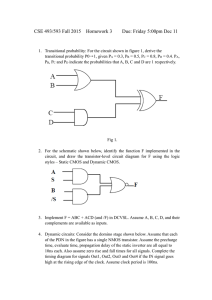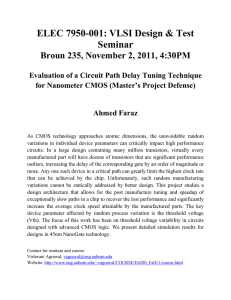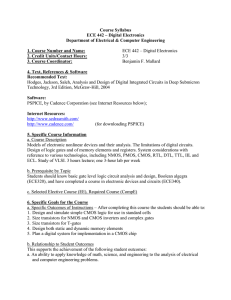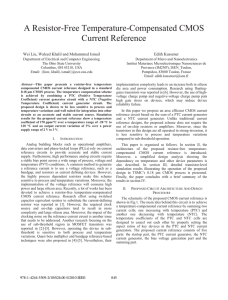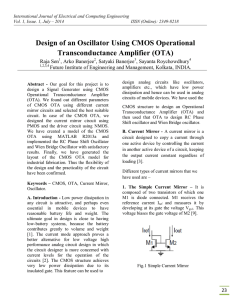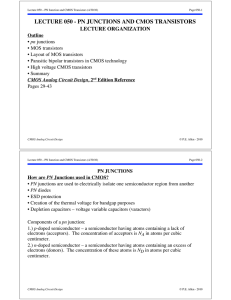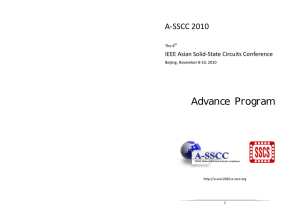TLHS Linear CMOS - Electro
advertisement
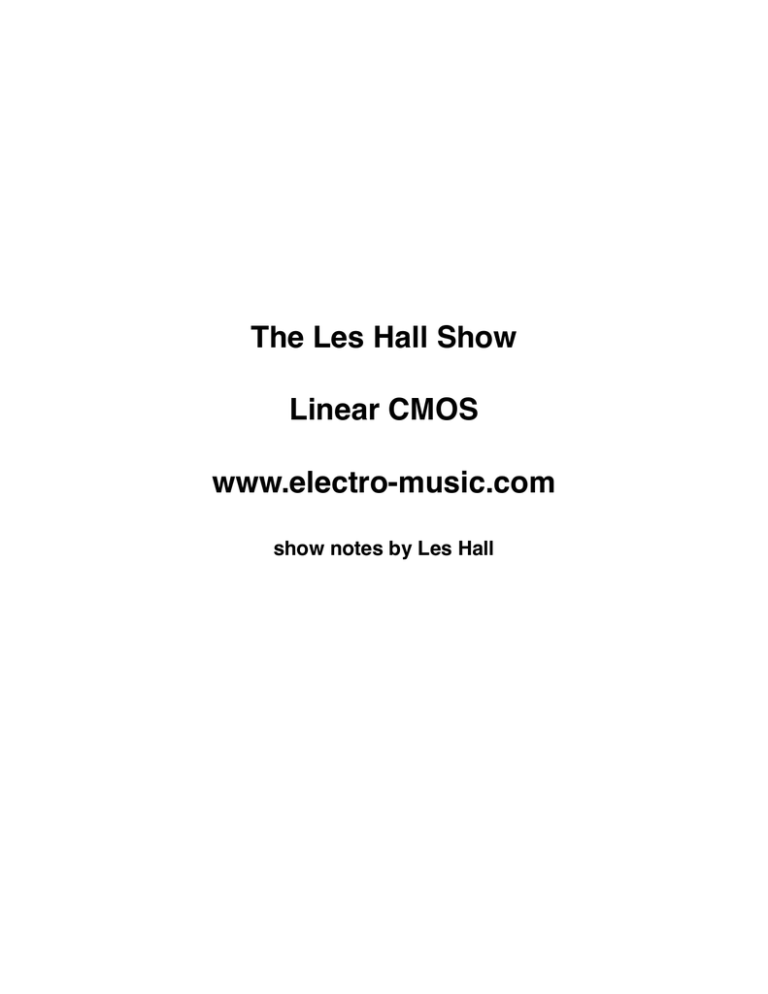
The Les Hall Show Linear CMOS www.electro-music.com show notes by Les Hall CMOS stands sor Complimentar Metal Oxide Semiconductor and it is a digital logic family of chips. Today essentially all computer microprocessors are made of millions of CMOS transistors, however back in the 1970's it existed as chips with just a few dozen transistors. These chips are called "4000 series" chips because their identification numbers are all in the 4000's. To understand CMOS a bit, we will use the schematic below. It's an example of some CMOS inverters used as mixers but we will pretend that the AUDIO1 and AUDIO2 connections are actually the supply voltage (a 9V battery) so that the middle and right circuits act as inverters. I should have drawn something up but there was not time. We use the water tower analogy to explain how these transistors work as described in the show. Each of the two transistors that make up an inverter is a switch much like a water valve and the input signals on CV1 and CV2 control the switches of the two inverters. The value of the input voltage as high or low sets the output voltage as low or high. That is digital circuit operation. In the case of linear CMOS, we apply a voltage part way between high and low to get an output voltage that is part way between low and high. This is analagous to turning the water valves on part way so that some current flows to ground and some to the output. This is accomplished with feedback as explained in the show. We have three oscilloscope images to study. The first one below is simply the output of the computer's headphone jack connected to the scope probe, showing that we have everything all calibrated properly for the other two photographs. You can see that the line is straight with a slope of one, meaning that y equals x. The photo below shows our linear CMOS gate's transfer function. It looks just like a digital CMOS transfer function with it's flat horizontal regions at the high and low values of input signal, however there is a region in the middle that has a slope of minus ten. The circuit will self-bias at the middle of that slope and wiggle up and down in response to small changes in the input signal wiggling. The plot below shows the transfer function of the linear CMOS gate when the gain is set to minus one. We have our slope of negative one, however the circuit is selfoscillating which makes an undesired audio signal. We don't want the self-oscillation so we use larger gains to stop that from happening. The circuit below shows a tremolo circuit from our friend slack that has three linear CMOS amplifiers in it. Note that they all have a gain larger than minus ten as discussed on the show. These notes are very incomplete, however they do show you the images that were discussed during the show. I shall attempt to create more complete notes and have them available before the show so that we can discuss exactly what you have available to you. I hope you enjoy The Les Hall Show, a weekly broadcast about music technology in both hardware and software form. It's basically me sharing what I know about how to make music with technology and I hope that you enjoy the show. Please feel free to write us and I will attempt to respond to your mail on the show. Thanks and have a blessed day. Les Hall
